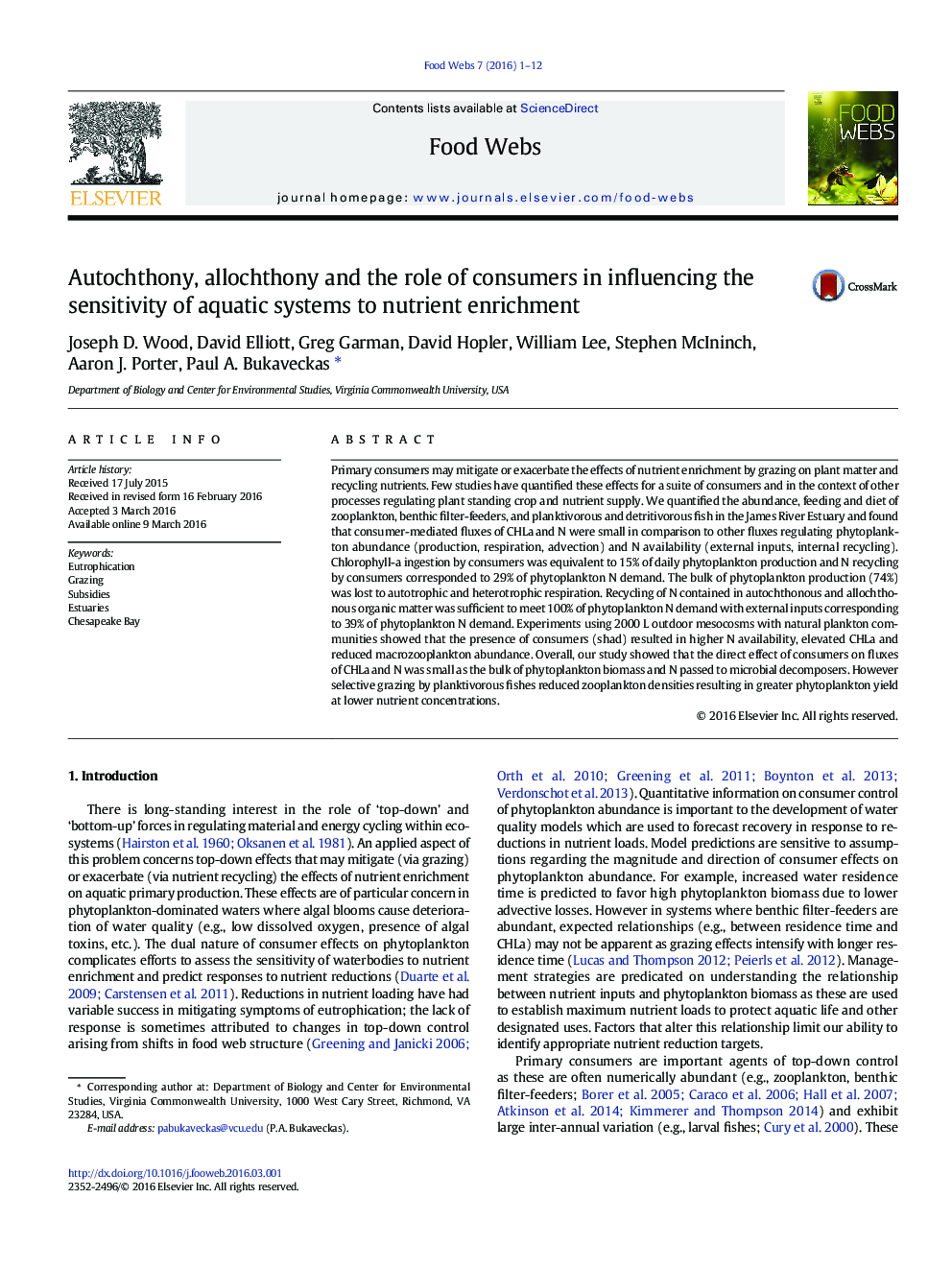| کد مقاله | کد نشریه | سال انتشار | مقاله انگلیسی | نسخه تمام متن |
|---|---|---|---|---|
| 4493265 | 1623638 | 2016 | 12 صفحه PDF | دانلود رایگان |

Primary consumers may mitigate or exacerbate the effects of nutrient enrichment by grazing on plant matter and recycling nutrients. Few studies have quantified these effects for a suite of consumers and in the context of other processes regulating plant standing crop and nutrient supply. We quantified the abundance, feeding and diet of zooplankton, benthic filter-feeders, and planktivorous and detritivorous fish in the James River Estuary and found that consumer-mediated fluxes of CHLa and N were small in comparison to other fluxes regulating phytoplankton abundance (production, respiration, advection) and N availability (external inputs, internal recycling). Chlorophyll-a ingestion by consumers was equivalent to 15% of daily phytoplankton production and N recycling by consumers corresponded to 29% of phytoplankton N demand. The bulk of phytoplankton production (74%) was lost to autotrophic and heterotrophic respiration. Recycling of N contained in autochthonous and allochthonous organic matter was sufficient to meet 100% of phytoplankton N demand with external inputs corresponding to 39% of phytoplankton N demand. Experiments using 2000 L outdoor mesocosms with natural plankton communities showed that the presence of consumers (shad) resulted in higher N availability, elevated CHLa and reduced macrozooplankton abundance. Overall, our study showed that the direct effect of consumers on fluxes of CHLa and N was small as the bulk of phytoplankton biomass and N passed to microbial decomposers. However selective grazing by planktivorous fishes reduced zooplankton densities resulting in greater phytoplankton yield at lower nutrient concentrations.
Journal: Food Webs - Volume 7, June 2016, Pages 1–12